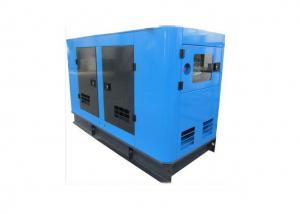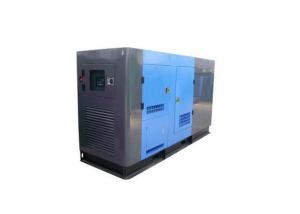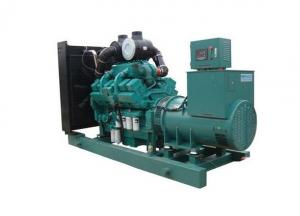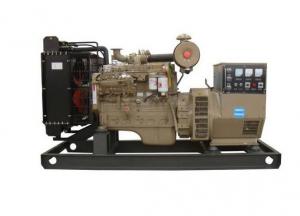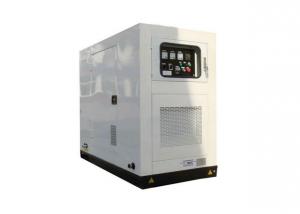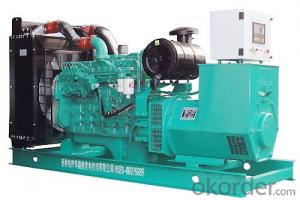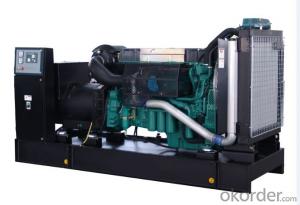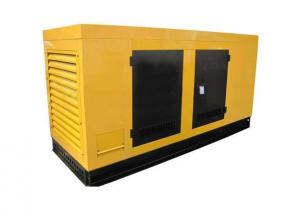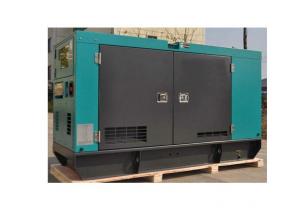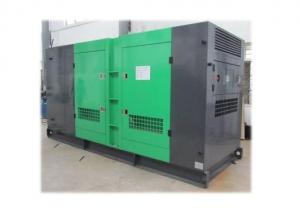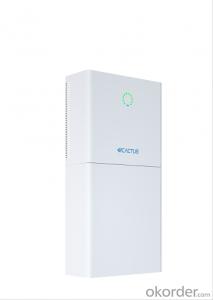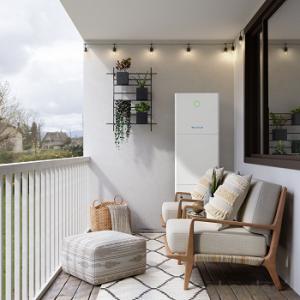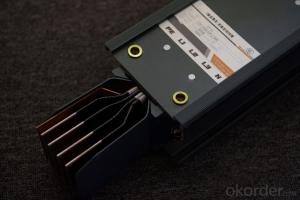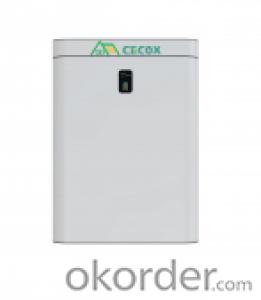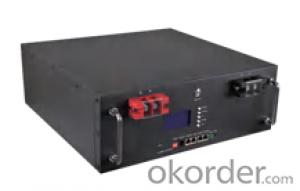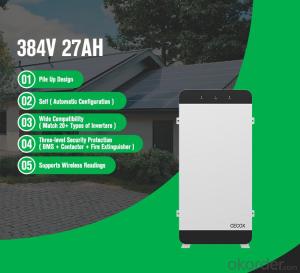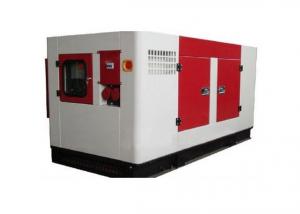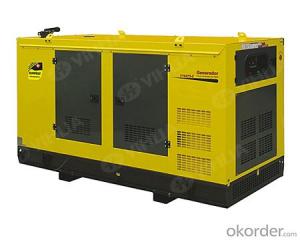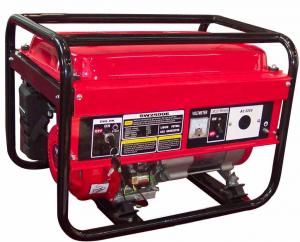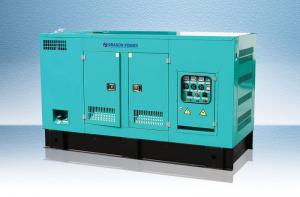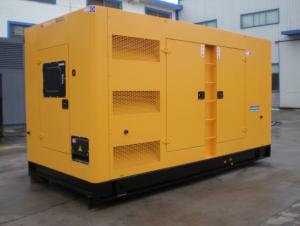Product list of Volvo Engine type (Volvo Generator) G102
- Loading Port:
- Shanghai
- Payment Terms:
- TT OR LC
- Min Order Qty:
- 1 unit
- Supply Capability:
- 300 unit/month
OKorder Service Pledge
OKorder Financial Service
You Might Also Like
300kw Volvo power generator:
We can customize diesel generator set as your special demand.
Detailed introduction to Volvo Diesel generator set TAD1241GE(300kw):
The specifications of the diesel generator set:
1.Diesel Engines: VOLVO
Arrangement-cylinder: Vertical
Type of Governor: Electronically
Model of Governor: PT fuel pump
Starting: By electricity
The rated speed:1500/1800rmp,
four strokes, inline. water-cooled system,
Max. output:300kw ( 375kva)
2.Alternator: Kaijieli/Marathon/Stamford
Type: brushless
Bearing: single/ double bearing.
Damping windings: full damping
Safety Guard Grade: IP22
Insulation grade: H
Short-circuit protection: Air switch
telephone interference: THF<20‰, TIF<50< p="">
3.The generator set:
a.basic specifications:
230/415V,50/60HZ,0.8ph.
three phase, four wires
b.Character;
base fuel tank for 8 hours
c.Use:can be used for the open type and the soundproof type, automatic type
- Q:i mean from off state to ON State,the amount of diesel it reqiures to burn out.
- I have never heard. But it can't be very much. There's a primer button back in the long hood area. Priming is necessary because the fuel runs back down into the fuel tank when not running. After priming for about 6 to 10 seconds, a start switch is flipped that turns the generator into a magnetic starter motor. The engine only turns over just a couple times (usually) before it fires and is pleasantly idling on its own. Starting can't require very much fuel. On the newer GEs and EMDs with auto shut down, these starting functions are all automatic electronically of course.
- Q:For anyone well up on EMD E and F units: saw a rather frightful picture last night of an F unit slamming into a switcher. not pretty ofcourse. it was on a curve so the F unit fell to her side to the outside of the curve. but not before breaking in half right behind the cab. the picture caption remarked that this was a common feature of the Es and Fs. By design? for safety? or design flaw? first time id seen this type of damage to an F, and certainly have never heard this comment of them. can someone clarify please? Couple days ago i was doing some reminiscing of railfanning way back in the day. i was fondly thinking of the great time i had with the crews. got to thinking about more of the details. all the stuff they had shown me. then something popped into my head. torpedoes! back then, scary lil devices to me! but rightlyfully so. so while im here in questions, are track torpedoes still used (when needed)? are they still around? havent seen one in quite along time since ive thought about it.thank you!
- The torpedo lives. The Es and Fs, not so much. But this is true. I have in my collection several derailments, collisions, etc., the aftermath caught on film. The F units did have a tendency to break behind the cab, turning them into an A frame in a collision. Crew protection has been at a low all along, so it probably was a happy albeit unintended consequence. The best example I have is a corn field meet between an F unit consist and a steam switch engine at the far west end of Roseville yard at a place called Antelope, circa 1952-ish. The head end crew of an east train fell asleep, very easy to do, and ran into the yard and ran into the yard engine. Always a handsome loco to begin with, even the major inverted 45 degree V bend looked appropriate for an F unit in Black Widow paint. Actually it was a very conscientious and well known, well respected engineer at the throttle. A union official, a BLE (Brotherhood of Locomotive Engineers) Local Chairman. Can't remember the name for the life of me right on the tip of my tongue You got any ideas, Andy?
- Q:I was talking with a friends and I know gas in a car or lawnmower etc will go bad after a certain amount of time. Then we got thinking about the massive amounts of diesel fuel in storage at hospitals etc, is there a storage life for it? and is it turned over all the time?
- Let me explain something to you: Hybrid is a drive configuration. Diesel is an energy source. You see how they're two completely different things? You can have a diesel hybrid, what do you think freight trains are? Diesel fuel has it's up sides, and a diesel electric hybrid would be even better. Why do you have such a personal dislike of hybrids? What exactly do you have against a more efficient, longer lasting drive configuration? Oh, and you talk about low end torque? Electric drive produces max torque at stall. You'll never win a torque battle with an electric, they've got it all over ICEs in that department.
- Q:I am looking for the stand by large generator 15-20kw (to use all the power on one transfer switch). The problem is that stand by generator require large propane tanks (expensive to install). I would like to find a stand by generator that i could run off gasoline and use all of it available power. I think this would the most economical solution. In case of propane/natural gas the cost of propane tank installation is significant. The diesel stand by generators are significantly more expensive. So far I have found tri-fuel13kw portable generator that has several outlets. In this case not all the power can be utilized.
- I don't get what you mean by not able to use all the power. The generator will produce it's rated output, and little more, from one or any combination of it's outlets - single or three phase, including the 12 volt charging system. The total output of the machine is available as a function of the total load connected, not the number of plugs or the variety of outlets - it is the total load that counts. Petrol is the least efficient, and the most dangerous fuel to use and store. The amount of fires involving LPG or similar fuels is a fraction of those involving petrol in road accidents for a start. A slow speed Diesel generator correctly sized for your normal load (allow 33% additional capacity for starting induction motors etc.) will use the least fuel, and be the longest lasting by a large margin of any of the choices you suggest above. The cheapest initial option will be a petrol powered system, but the most expensive to run, and the earliest to wear out. The running costs will be much cheaper on propane etc., and the engine will run much cleaner and last longer as a result. A high speed diesel unit will cost more than the petrol version, but will not be as expensive as the better slow speed types, it will be economical, but is not going to last as well as the slow speed models. Well made slow speed diesel units will cost the most to install, but will be the most economical both to run, service and in longevity. The cheapest initial option I have found, is always the most expensive in the medium and long range. If the unit is purely for emergency power, it should be run under load every month at least, and the fuel must be kept fresh, or treated and constantly monitored to withstand long term storage - this is where the propane storage is particularly effective. The worst thing that can be done with any backup power system is to allow it to sit for any length of time without being used. Many fail at critical times because of this.
- Q:i.e a house or a hospital.
- Gasoline or diesel. You can buy small generators for this. Average home would use a 2 kW typically, a 5kW if there is lots of AC and other large loads. But a hospital requires a much larger generator, and also a lot more reliablility, as well as automatic switchover. .
- Q:What is the most important parameter of diesel generator
- rated voltage (Ue): refers to the diesel generator set in the normal operation of the line voltage, the unit is V (V) or kV (kV).
- Q:I live in a location without municipal water supply. I could buy a natural gas generator, and hire an electrician to connect it to my breaker box, but I believe there is a way to connect solar panels to a battery system to provide enough power for my 220 volts submerged pump. I have 2 horses, 24 chickens, 2 dogs, 4 cats, 3 parakeets, and 3 people that need water in the event of a hurricane, national power grid attack,etc. There are solar powered generators advertised, but they are not powerful enough for 220. Also, my whole neighborhood of over 200 homes all lives off their own water wells, and we all suffered during hurricane Ike: 10 days without a water supply.
- i know you are interested in producing solar energy. I'm going to be your solar mentor and show you step-by-step how to make a solar panel. I'll also teach you my other secrets to renewable energy in an easy to follow format. Did you know? A basic solar installation from a retailer can take 30 years to pay back and cost you well over $20,000?
- Q:I need to write up a pre fire plan for the Emergency Diesel Generator room aboard the ship I sail on at school, does anyone have any information? Thanks
- Nopebut I can write one for a Brigade Combat Team in the attack or on the defense
- Q:HelloI am doing a question on my homework and im being asked to determine how long a tank of gas on a diesel generator would last a family if one tank produced 20kW of electricity. This family uses 2.052kWh of electricity every day. The problem i have run into is that i don't know how to determine how long tha tank can last with only those values, i have a feeling im missing something very obvious here. Any help would be great.Thanks!
- Yup, you missed the obvious. It is not important how big the tank is, simply that when you have used the whole tank you have produced a total of 20kW/hours of electricity for consumption. So as shown by the first person to answer, the tank will last for around 9.5 days. (Assuming the family's consumption is consistent throughout the day.)
- Q:I understand it as far as the diesel engine driving the generator- or is it an alternator?- to power the motors which turn the wheels. But does each wheel have its own motor, or is it one motor per axle?
- Diesel-electric locomotives most commonly use one traction motor per axle, with the motor shaft parallel to and beside the wheel axle and with a simple pair of gears connecting the two. Early diesel-electric locomotives used a DC generator that directly fed DC traction motors, with the generator often doubling as a starter motor. By the 1970s, locomotives commonly used alternators (which were easier to maintain) that generated AC current, which was rectified back to DC to power the same DC traction motors as before. The EMD GP38 was notably produced with both a generator and an alternator, with the alternator-powered version called the GP38AC. AC traction motors became commonplace in the early to mid 1990s - but they do not use the electricity produced by the alternator directly as it is not of the correct frequency. The AC power from the alternator is first rectified to DC, then (using inverters) back to AC current of the correct frequency for the traction motors. GE locomotives use one inverter per traction motor, while all but the most recent EMD locomotives used one inverter per truck. The traction motors are readily visible on six-axle units such as recent EMD SD series locomotives or GE Dash-9 and AC units. These locomotives all have traction motors that face inwards, so that they all face the same direction on each truck. On the innermost axle they extend considerably beyond rim of the wheels toward the fuel tank, visible in this photo I took of an EMD SD40-2: trainiax /photos/2013/2013-05- To account for the different current and resistance characteristics of the electric motors at low and high speed, locomotives have one or several transitions between wiring the motors in series or in parallel, or in a combination of both.
1. Manufacturer Overview |
|
|---|---|
| Location | |
| Year Established | |
| Annual Output Value | |
| Main Markets | |
| Company Certifications | |
2. Manufacturer Certificates |
|
|---|---|
| a) Certification Name | |
| Range | |
| Reference | |
| Validity Period | |
3. Manufacturer Capability |
|
|---|---|
| a)Trade Capacity | |
| Nearest Port | |
| Export Percentage | |
| No.of Employees in Trade Department | |
| Language Spoken: | |
| b)Factory Information | |
| Factory Size: | |
| No. of Production Lines | |
| Contract Manufacturing | |
| Product Price Range | |
Send your message to us
Product list of Volvo Engine type (Volvo Generator) G102
- Loading Port:
- Shanghai
- Payment Terms:
- TT OR LC
- Min Order Qty:
- 1 unit
- Supply Capability:
- 300 unit/month
OKorder Service Pledge
OKorder Financial Service
Similar products
New products
Hot products


